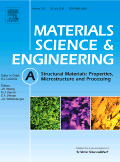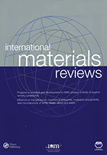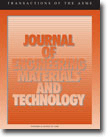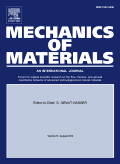
GRANULAR MATTER
Scope & Guideline
Unraveling the Complexities of Granular Matter
Introduction
Aims and Scopes
- Mechanics of Granular Materials:
Research articles delve into the mechanical behavior of granular materials, including stress response, failure mechanisms, and the influence of particle interactions. - Numerical and Experimental Methods:
The journal emphasizes the use of numerical simulations (e.g., Discrete Element Method - DEM) and experimental methodologies to investigate granular phenomena across various scales. - Microstructural Analysis:
A key focus is on understanding the microstructural characteristics of granular assemblies and how these influence macroscopic properties. - Energy Dissipation and Flow Dynamics:
Studies often explore energy dissipation mechanisms in granular flows, including transitions between different flow regimes, and the impact of external forces. - Applications in Engineering and Geoscience:
The journal publishes research relevant to practical applications, including geotechnical engineering, natural hazard assessments, and material processing techniques. - Innovative Material Development:
Research on the development of new granular materials and composites, utilizing advanced techniques such as 3D printing and additive manufacturing.
Trending and Emerging
- Machine Learning and Data-Driven Approaches:
Recent publications illustrate a growing trend towards integrating machine learning techniques for predicting and analyzing granular material behaviors, enhancing both accuracy and efficiency. - 3D Printing and Additive Manufacturing:
The use of 3D printing technologies in creating and testing granular materials is gaining attention, reflecting the innovative applications of these techniques in material science. - Environmental and Sustainability Studies:
Research focusing on the environmental impact of granular materials and sustainability practices in their application is emerging as a significant trend. - Complex Systems and Interactions:
There is an increasing interest in studying granular materials as complex systems, particularly their interactions with other materials and their behaviors under various environmental conditions. - Micro-Macro Transition Studies:
Emerging themes include the exploration of how micro-level interactions among particles translate into macro-level behaviors, emphasizing the importance of understanding granular systems holistically.
Declining or Waning
- Traditional Soil Mechanics Approaches:
There is a noticeable decline in the emphasis on classical soil mechanics topics, as newer methodologies and technologies are being adopted. - Static Analysis of Granular Materials:
Research focusing solely on static properties and behaviors of granular materials is becoming less prevalent, with a shift towards dynamic and time-dependent analyses. - Single-Phase Flow Studies:
Works that examine granular materials in isolation from multi-phase interactions (such as gas or liquid) are appearing less frequently, indicating a trend towards more complex, multi-phase studies. - Conventional Characterization Techniques:
Standardized methods for characterizing granular materials are being overshadowed by more innovative techniques, such as machine learning and advanced imaging technologies.
Similar Journals

MATERIALS SCIENCE AND ENGINEERING A-STRUCTURAL MATERIALS PROPERTIES MICROSTRUCTURE AND PROCESSING
Unveiling the Secrets of Microstructure and ProcessingMATERIALS SCIENCE AND ENGINEERING A-STRUCTURAL MATERIALS PROPERTIES MICROSTRUCTURE AND PROCESSING, published by ELSEVIER SCIENCE SA, is a highly regarded journal specializing in the fundamental and applied aspects of materials science. Since its inception in 1988, this journal has established itself as a leading platform for disseminating innovative research findings, particularly focused on structural materials, their properties, microstructure, and processing techniques. With a prominent impact in the field, it ranks in the Q1 category across several disciplines including Condensed Matter Physics, Materials Science, Mechanical Engineering, and Nanoscience and Nanotechnology, highlighting its significance and influence within the academic community. The journal is accessible to a global audience of researchers, professionals, and students, underscoring its commitment to advancing knowledge in materials engineering. Aspiring authors and readers will find this journal an essential resource for cutting-edge research and the latest advancements in the field, further supported by its impressive Scopus rankings that place it among the top-tier publications.

MECCANICA
Bridging Disciplines in Physics and Mechanical EngineeringMECCANICA, an esteemed journal published by Springer, stands at the forefront of research in the fields of Condensed Matter Physics, Mechanical Engineering, and Mechanics of Materials. Established in 1966 and continuing through 2024, this journal provides a robust platform for the dissemination of innovative research and advancements in these increasingly interconnected domains. With an impressive 2023 ranking placing it in the Q2 category across multiple fields, MECCANICA boasts a Scopus rank of #198 in Mechanical Engineering, #150 in Condensed Matter Physics, and #141 in Mechanics of Materials, highlighting its significance and influence within the scholarly community. The journal aims to foster dialogue among researchers, professionals, and students, facilitating the exchange of cutting-edge ideas and methodologies crucial for overcoming contemporary engineering and physics challenges. Readers can access a wealth of knowledge through its comprehensive articles, and while it does not currently offer open access, the journal remains instrumental in shaping the future of engineering and physical sciences.

KOVOVE MATERIALY-METALLIC MATERIALS
Shaping the Future of Materials EngineeringKOVOVE MATERIALY-METALLIC MATERIALS, published by REDAKCIA KOVOVE MATERIALY, is a prominent journal embedded within the field of materials science, focusing particularly on metallic materials. With a history dating back to 1968, this Slovakian journal has made significant contributions to the understanding of materials chemistry, mechanical engineering, and the mechanics of materials. While currently classified in the Q4 category for Materials Chemistry and Mechanical Engineering, and Q3 for Metals and Alloys, it aims to provide a platform for high-quality research and novel findings in these domains. Furthermore, the journal is indexed within Scopus, reflecting its engagement with the global scientific community and its role in disseminating pivotal studies. Researchers, professionals, and students will find crucial insights and developments in the field, making it a valuable resource for those seeking to enhance their understanding of metallic materials and their applications.

INTERNATIONAL MATERIALS REVIEWS
Advancing Knowledge in Materials Chemistry and EngineeringINTERNATIONAL MATERIALS REVIEWS, published by SAGE Publications Inc, is a leading journal dedicated to the comprehensive analysis of contemporary research in the fields of materials chemistry, mechanical engineering, mechanics of materials, and the study of metals and alloys. With an impressive impact factor and a Q1 ranking across multiple categories such as Materials Chemistry and Mechanical Engineering in 2023, it ranks amongst the top journals for innovative materials research. The journal has a long-standing history since its inception in 1987 and continues to serve as a crucial resource for academics and professionals alike. Although it is not open access, it is renowned for its rigorous peer-review process and its commitment to disseminating high-quality materials science research globally. Researchers, students, and industry professionals benefit greatly from the journal's insightful reviews, both for the advancement of theoretical knowledge and practical applications within the fast-evolving materials field.

ARCHIVES OF MECHANICS
Championing Open Access for Mechanical InnovationArchives of Mechanics, published by the Polish Academy of Sciences Institute of Fundamental Technological Research, is a distinguished open-access journal established in 1971 that has played a pivotal role in the dissemination of knowledge in the fields of Mechanical Engineering and Condensed Matter Physics. With its commitment to accessibility since adopting open access in 2022, this journal provides a platform for researchers, professionals, and students to share cutting-edge research findings and innovative methodologies. Although it currently holds a Q4 ranking in Condensed Matter Physics and a Q3 ranking in Mechanical Engineering for 2023, its comprehensive scope, which spans critical advancements in mechanical systems and materials science, positions it as a valuable resource for the academic community. Located in Warsaw, Poland, the journal continues to contribute significantly to the global discourse on mechanics and is dedicated to fostering new ideas that advance both theoretical and applied aspects of the discipline.

Materials Physics and Mechanics
Advancing the Frontiers of Materials ScienceMaterials Physics and Mechanics is a pivotal journal dedicated to advancing the fields of condensed matter physics, materials science, mechanical engineering, and the mechanics of materials. Published by the Institute of Problems in Mechanical Engineering, Russian Academy of Sciences, this journal has established itself as a valuable resource since its inception, particularly from 2003 to 2004 and now continuously from 2009 to 2024. Although it currently holds a Q4 categorization in various disciplines, its contributions are critical to understanding and developing new materials and their applications in engineering. The journal provides insightful articles that explore the nuances of material properties, their behaviors under different conditions, and the physical principles governing these phenomena. Though it operates under a traditional publication model, the insights provided within its pages are invaluable to researchers, professionals, and students striving to push the boundaries of knowledge in the materials domain. Its ISSN numbers (1605-2730, E-ISSN 1605-8119) serve as a gateway to a wealth of scientific knowledge emanating from the Russian Federation, contributing to the global discourse in materials physics and mechanics.

JETP LETTERS
Illuminating the Frontiers of Physics and AstronomyJETP LETTERS, published by MAIK NAUKA/INTERPERIODICA/SPRINGER, is a prestigious journal in the field of physics and astronomy, which plays a pivotal role in disseminating groundbreaking research and innovative ideas since its inception in 1969. With an ISSN of 0021-3640 and an E-ISSN of 1090-6487, this journal aligns well with the interests of both seasoned researchers and emerging scholars, having achieved a 2023 category rank of Q3 for miscellaneous topics within physics and astronomy. Located in the United States at 233 SPRING ST, NEW YORK, NY 10013-1578, JETP LETTERS serves as a critical resource for its readership, offering exclusive insights and advancements across diverse areas of physics. While not open access, it hosts a collection of articles that refine theoretical approaches and experimental methods, providing both knowledge and inspiration to professionals and academics seeking to make impactful contributions to the scientific community. The journal’s quality is reflected in its Scopus ranking, where it stands at 39 out of 81 in the multidisciplinary category, placing it in the 52nd percentile, thus underscoring its significance and reliability as a scholarly outlet.

JOURNAL OF ENGINEERING MATERIALS AND TECHNOLOGY-TRANSACTIONS OF THE ASME
Elevating the discourse on materials technology and its impact.JOURNAL OF ENGINEERING MATERIALS AND TECHNOLOGY-TRANSACTIONS OF THE ASME is a premier journal published by the American Society of Mechanical Engineers (ASME), dedicated to advancing the field of engineering materials and technology. With an ISSN of 0094-4289 and E-ISSN 1528-8889, this journal has provided invaluable insights since its inception in 1973. Operating from its headquarters in New York, United States, it serves a global audience of researchers, professionals, and students alike. The journal is recognized for its rigorous peer-review process and its commitment to disseminating high-quality research, currently holding a Q3 quartile ranking across multiple categories including Condensed Matter Physics, Materials Science, Mechanical Engineering, and Mechanics of Materials. With a focus on exploring innovative materials and their applications, it aims to foster collaboration and discovery in the engineering community. Although it is not an open-access journal, it continues to play a vital role in shaping the future of engineering materials research up to 2024. Researchers and practitioners will find in this journal a significant platform to support the development and understanding of engineering materials, making contributions that resonate through academia and industry.

MECHANICS OF MATERIALS
Fostering Breakthroughs in Mechanics of MaterialsMECHANICS OF MATERIALS, published by ELSEVIER, is a premier international journal serving the dynamic fields of Materials Science and Mechanics. With an esteemed reputation reflected in its 2023 Quartile rankings—Q1 in Instrumentation, Q1 in Materials Science (miscellaneous), and Q1 in Mechanics of Materials—this journal offers a vital platform for the dissemination of cutting-edge research from 1982 to the present. Operating from its headquarters in Amsterdam, Netherlands, the journal boasts impressive Scopus ranks, including 22nd in Physics and Astronomy (Instrumentation) and 67th in Engineering (Mechanics of Materials), placing it firmly within the top echelons of academic publishing. Though not an open-access journal, its rigorous peer-reviewed content ensures high-quality contributions aimed at advancing knowledge and application in mechanics and materials. Researchers, professionals, and students are encouraged to engage with the latest studies and findings that underpin innovations in material properties, testing methodologies, and engineering applications, reinforcing the journal’s critical role in shaping the future of the discipline.

Physical Mesomechanics
Connecting researchers to shape the future of materials science.Physical Mesomechanics is a distinguished journal published by SPRINGER, focusing on the interdisciplinary field of condensed matter physics, materials science, and mechanics of materials. With an ISSN of 1029-9599 and an E-ISSN of 1990-5424, this journal serves as an essential platform for researchers, professionals, and students to share and disseminate high-quality research findings. It is recognized for its significant impact, boasting a Q2 ranking in 2023 across multiple categories including Condensed Matter Physics and Materials Science, ensuring a substantial scholarly contribution to the field. Despite being a subscription-based journal, its reputation within the academic community remains robust, underlined by its comprehensive coverage of topics related to the behavior of materials at the mesoscopic scale. The journal promises to further enhance its importance in the scientific dialogue by encouraging submissions that push the boundaries of current knowledge from 2004 to 2024, fostering innovation and collaboration among researchers globally.